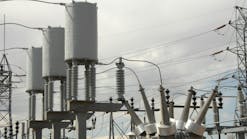After I was 40 years with the same dentist, he retired. It wasn’t hard finding a new one, but I wasn’t prepared for my first visit. After the initial pleasantries, the dental assistant took me into their tech center for a 360-panorama x-ray of my teeth.
Whoa! I was placed in the middle of a huge CAD/CAM dental device, told to hold onto two handles, put my forehead against the head rest, bite down on the bite guard, lean back, and enjoy the ride. When I was done, I compared this experience with my last dental exam. All I could think of was a quote from Star Trek’s Mr. Spock. He compared 20th century electronics as not being too far ahead of “stone knives and bearskins” in one of their time travel episodes.
Panorama done, I was led to other high-tech devices and then back to an exam room. It had the standard exam chair and accouterments, but with a big difference. It had computer screens for the dentist, his assistant, and me. As the dentist began explaining what all this technology told him, I started asking questions.
It wasn’t long before I had the staff wrapped into a tech toy show and tell. I don’t think they get many inquisitive patients, but this digital technology was fascinating. For the first time, I could see what a dentist saw — the good, the bad, and the ugly all in real-time. When I saw my son that afternoon, I had to share my discovery. He laughed and told me his dentist has been using this type of technology for years. Legacy thinking got me!
Even the most technically savvy of us can be caught up in legacy thinking. In its simplest form, legacy thinking is thinking held over from past successes. It’s like old-school technologies that are still in the workplace, but no longer compatible with newer technologies. It’s seductive in a way; we have always done it that way — why change? What about the power delivery system? We are guilty of doing that on many fronts, but it is so easy to do.
Changing the Mindset
There are a lot of big ticket technologies that are no brainers when it comes to adopting them, such as FACTS devices, distributed energy resources, renewable generation, energy storage, and many other such apparatuses. Unfortunately, this legacy mindset has us using traditional approaches that are irrelevant to today’s electric grid, but they’re still in use.
I have a couple of legacy-thinking personal favorites. One of them is the smart meter on the side of my house. Once a month the electric company sends an employee out to read that meter. The utility is not taking advantage of even its simplest function, i.e., remote electric usage recording, but the local utility isn’t unique. Others have done the same thing due to lack of regulatory support or customer pushback because of privacy issues. There is also the cost vs. benefit associated with full scale smart meter system deployment. Resolving these concerns has been a sticky issue, but it is going to be solved with the widespread acceptance of DER technology for prolonged outages and the growth of the prosumer.
Another legacy-thinking favorite is calendar-based maintenance cycles. There are utilities whose only criteria for when maintenance is due is the time that has expired since the last maintenance. Smart grid technology is making it possible for maintenance to be based on the real-time condition of their equipment, but deployment is slow. Again, the reasons are similar to the smart meter issues and regulatory support is the key factor.
My number one legacy-thinking favorite was the subject of last month’s Charging Ahead’s feature article, titled “Making Hidden Capacity Available.” It is the poster child of legacy thinking. Without repeating the article, it compares the decades old static line rating (SLR) system to modern dynamic line rating (DLR) systems. Four or five years ago there were a lot of DLR pilot projects deployed with regulatory support. Then the support and money disappeared, and so did the DLR projects.
Those projects proved that DLR technology can add 15% to 25% more line capacity. That is a lot of capacity to leave on the table and it appears to have caught FERC’s attention. FERC published a staff paper about managing line ratings last year, and it looks like there is going to be regulatory support. This is going to get interesting!


